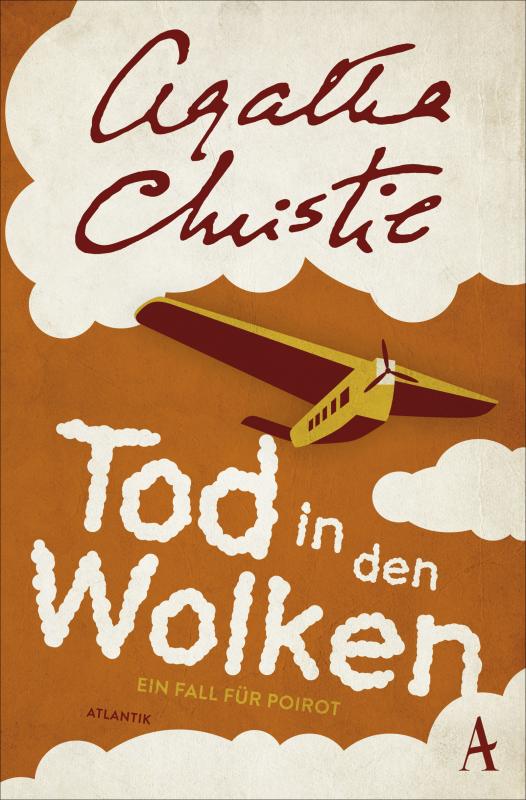Ich habe die englische Original-Facsimile-Ausgabe ("Nachbildung" der Erstausgabe) gelesen, "Death in the Clouds".
Original Version, 1935. Appeared first in the US earlier in the same year as “Death in the Air”. German: "Tod in den Wolken", published 1937, translated by Otto Albrecht van Bebber. My edition is the facsimile one, thus hardcover. Novel number 10 with Poirot, that is, if you do not count short stories or the play novelisation in between; novel number 17 altogether.
Some persons attract crime more than others. When Hercule Poirot goes back to London via plane, it is not on business. That is, until one of the other passengers is found dead. What begins to merely look suspicious due to a tiny item underneath the dead woman’s seat will soon lead to a murder investigation including blowpipes and exotic poisons, but no real clue (yes, even Poirot...). The murderer must have been on the plane – which puts ten passengers (including Poirot) and two stewards to close scrutiny.
I liked the focus in this story: this time, Poirot is one of the suspects – more so to the general public, being a somewhat eccentric looking foreigner. And also do the other passengers experience changes after the crime: while the young hairdresser has more customers out of sheer curiosity, nobody wants to go to a dentist under suspicion (if at all, that is). So Poirot highlights that this investigation is less about finding the murderer, but about clearing the innocent (p 155).
This story starts off as a murder mystery in a confined space aka the plane, goes over to be a courtroom crime, goes over to a lot of footwork and then finalizes with the typical Poirot technique of gathering (almost) all suspects. That was a bit too much for one story to my taste, which apart from this I liked after the somewhat very businesslike start (with lots of who sits where, goes where and when, and what is in the luggage).
Trivia:
Apart from Poirot, Scotland Yard Chief Inspector Japp is one of the investigators.
A fun reference to crime fiction writers is made by Japp concerning one of the passengers with just that strange profession: “I don’t think it’s healthy for a man to be always brooding over crime and detective stories, reading up all sorts of cases. It puts ideas into his head.” P. 81, Chaper 7. The eccentricities of the writer in question really convey the fun Christie must have had writing them!
p. 82 puts the time of the action to the year 1935, the year of publication.
In newer novels, nobody would have been officially allowed to investigate in a case he is involved with.
I liked the service concept: one plane,
References to other Christies:
Chapter 7. p. 80 “I remember a case in which I was concerned – a case of poison, where that very point arose.” (that is the point of a psychological moment) – refers to Three Act Murder.
Chapter 21. p. 197 “In one case I investigated everyone was [lying] !” hints at “Murder on the Orient Express.
Zeitgeist:
P 139 „They disliked loud voices, noisy restaurants and negroes.”
Chapter 13: p. 138 references to somebody as Ikey Andrew who has a Jewish mother, p. 135 has “…whose real name was Andrew Leech and whose claims to foreign nationality consisted of having had a Jewish mother…”.
Given one issue (contains spoiler) I have with the way the murder was committed (which I even think was superfluous to the storyline) plus the plotline style I commented on earlier: 4 stars.


